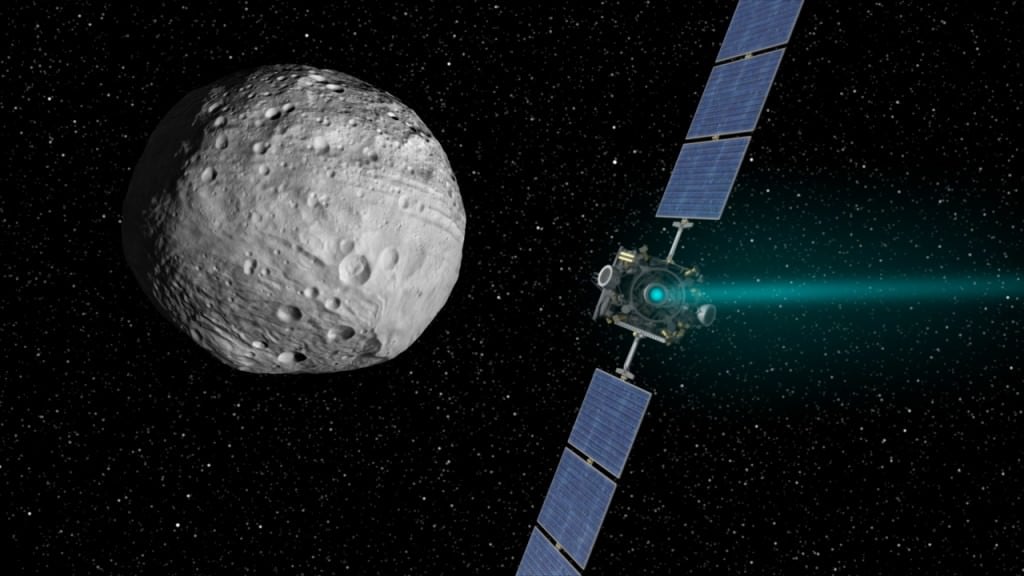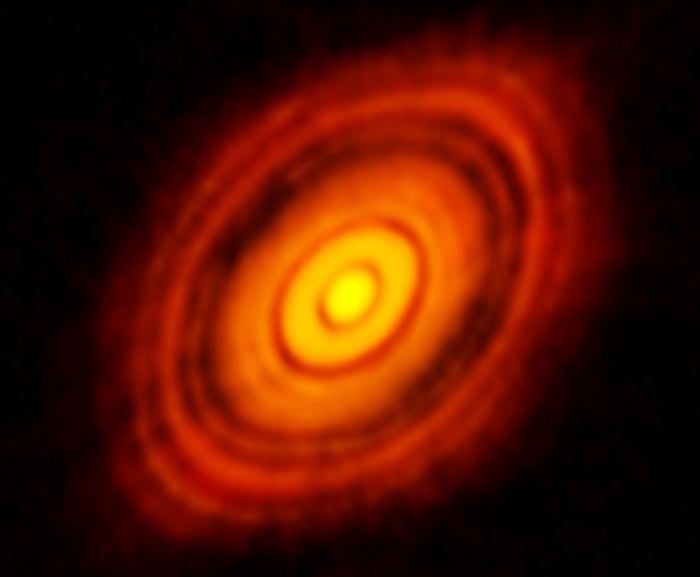Our Solar System was born in chaos. Collisions shaped and built the Earth and the other planets, and even delivered the building blocks of life. Without things smashing into each other, we might not be here.
Thankfully, most of the collisions are in the past, and now our Solar System is a relatively calm place. But frequent collisions still occur in other younger solar systems, and astronomers can see the aftermath.
The aftermath of a collision is an opportunity to learn something about planet formation. When a collision between distant objects occurs, astronomers train their telescopes on it to figure out what happened. Astronomers used the Spitzer Space Telescope and other facilities to track the aftermath of a collision around a young star named HD 166191.
"By looking at dusty debris disks around young stars, we can essentially look back in time and see the processes that may have shaped our own solar system."Kate Su, study lead author, University of Arizona.
HD 166191 is a ten million-year-old star about 330 light-years from the Sun. It's caught astronomers' attention because it's a protoplanetary disk transitioning to a debris disk. Years of observations showed a post-collision debris cloud passing in front of the star, giving scientists a novel look at collisions and their aftermath.
The study is titled " A Star-sized Impact-produced Dust Clump in the Terrestrial Zone of the HD 166191 System. " The lead author is Kate Su, an astronomer at Steward Observatory in the University of Arizona. The paper is available online at The Astrophysical Journal.
"By looking at dusty debris disks around young stars, we can essentially look back in time and see the processes that may have shaped our solar system," Su said in a press release.
The team of astronomers started watching HD 166191 back in 2015. They observed the young solar system more than 100 times between 2015 and 2019. The system is too young to have fully-grown planets, but planetesimals and maybe even dwarf planets are bound to be orbiting the star. Unfortunately, they're too small and distant to see in telescopes.
But planetesimals are the building blocks of planets. And those blocks don't accrete in an orderly fashion. Instead, they crash into each other, sometimes shattering into smaller chunks, sometimes melding together to eventually form larger rocky planets.
Those collisions produce dust clouds that are visible in infrared. Energy from the star strikes the dust and emits infrared light. And that's what the team saw in their observations with Spitzer. In 2018, the team observed a marked increase in brightness at HD 166191. The increase suggests that the amount of dust around the star increased dramatically. "The large-scale infrared brightening obviously points to a huge increase in the debris emission..." the authors write."
Over the years, the researchers watched as a debris cloud from the collision transited in front of its star. They calculated the size of the objects that collided, when the collision occurred, and the speed of the impact. They also watched how quickly the debris cloud dispersed.
Their observations showed that the debris cloud was elongated. They also showed that the cloud was larger than the star, covering about three times more area. But the increase in infrared light in 2018 suggested something else. It indicated that only a small portion of the debris cloud passed directly in front of the star and that the dust cloud had to be much larger. According to their research, it had to cover an area hundreds of times larger than the star. That's the only explanation for all that infrared light.
To produce that much dust, the objects in the collisions had to be as large as dwarf planets. The most well-known dwarf planet in our Solar System is Vesta, which NASA's Dawn mission visited in 2011. The astronomers behind this study say that the objects that collided around HD 166191 were about the same size as Vesta, about 530 km (330 miles) in diameter. "The amount and rapidity of the increase in the infrared flux requires a catastrophic event, such as a collision between two large bodies (?500 km in diameter) occurring in the terrestrial zone," the authors write in their paper.
The collision generated a lot of heat and some of the material was vapourized. Like balls on a pool table, the impact generated a chain-reaction of smaller collisions between debris and other orbiting rocky objects. The cascade of multiple collisions in mid-2018 explains the large amount of dust and the increase in infrared energy. "Simulations indicate a substantial rate of fragment collisions rapidly following the impact disruption of asteroid-sized bodies, which would expedite the initiation of an intense collisional cascade," the paper states. "This intense activity is further highlighted by detecting a star-size dust clump, passing in front of the star, in the midst of its infrared brightening."
Two things happened in the following months: the dust cloud expanded and became more translucent. The dust and the rocky debris from the collision were dispersing around the solar system. By the time 2019 rolled around, observations showed that the dust cloud that transited in front of the star was no longer visible, but the amount of dust in the system had doubled.
These observations are valuable to scientists who study solar systems and planets. Planet formation is largely hidden from view. Young solar systems are dusty places to begin with, and only certain observatories can pierce the veil of dust. Thanks to observatories like ALMA, we can see the lanes carved in the dust around young solar systems as planets form and sweep up the dust.
"Learning about the outcome of collisions in these systems, we may also get a better idea of how frequently rocky planets form around other stars," said study lead author Kate Su.
Astronomers will keep watching HD 166191 to see how the system develops. Astronomers think that it's transitioning from a protoplanetary disk to a debris disk. The star itself isn't accreting any more material. The excessive infrared emissions suggest that the system is still dusty, but the star has dissipated much of the gas left over from star formation via photoevaporation.
"Theoretical simulations indicate that the very existence of terrestrial planets depends on the collisional merging of planetary embryos and oligarchs," the paper says. This collisional merging generally happens during the first 200 million years after the protoplanetary disks have cleared out much of the remnant gas from the star formation. "Large-scale collisions among planetesimals and planetary embryos in the terrestrial-planet region are expected to be common after the dissipation of the gas in a protoplanetary disk, a stage we think HD 166191 is in," the authors write.
In our Solar System there were probably dozens of Moon-sized to Mars-sized rocky bodies in the inner Solar System. Astronomers think that the Moon formed when a protoplanet named Theia collided with the Earth. There were probably many more collisions, and the architecture of the inner Solar System is the result of that process.
But astronomers are stuck playing forensics in our Solar System. They have to study distant systems like HD 166191 to see any of this occurring.
"The system's evolutionary state (right after the dispersal of its gas-rich disk) makes it extremely valuable to learn about the process of terrestrial-planet formation and planetary architecture through future observations," the paper explains.
What's next for HD 166191? In their paper's conclusion the authors write that "... we might be witnessing the early giant impact phase in assembling terrestrial planets in the inner zone." Or the activity they're seeing in the young system "... might be triggered by perturbation from nearby, unseen planet-mass objects, creating orbit-crossing collisions in the existing asteroid population." Or the migration of a giant planet might be involved.
Young dusty systems undergo a lot of change, and only further observations will tell the tale. "The transient nature of extremely dusty systems further illustrates the importance of continuous monitoring. Future observations of this unique system would further shed light into our understanding of terrestrial-planet formation and overall assembling planetary architecture," they conclude.
Bring on the further observations!
 Universe Today
Universe Today


